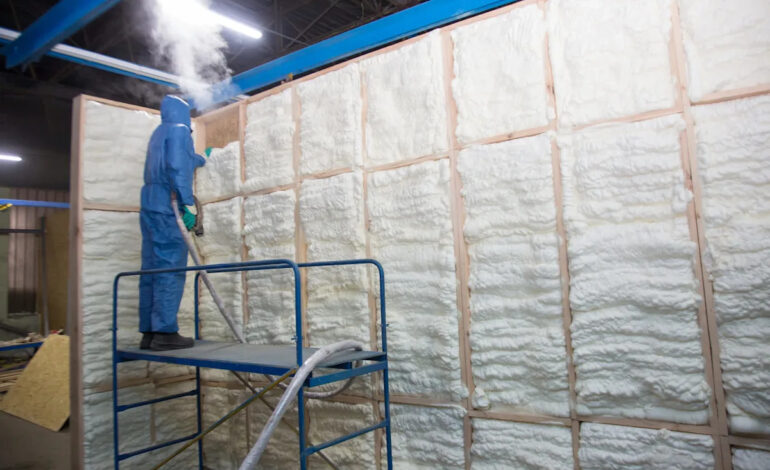Scientists Innovate Eco-Friendly Insulation Using Mushroom Mycelium

Scientists at the Hof University of Applied Sciences in Germany have unveiled a groundbreaking insulation material derived from mushrooms. This innovative product, named Mycobuild, aims to enhance energy efficiency while addressing common concerns about mold growth in homes. The project is led by the Institute for Circular Economy of Bio:Polymers (ibp) and is set for industrial production by March 2026.
Utilizing mushroom mycelium, particularly varieties native to Germany such as honeydew, fox bolete, and oyster mushrooms, the research team is exploring sustainable insulation solutions. These mushrooms can thrive at room temperature, eliminating the need for energy-intensive heating or cooling during cultivation. According to Dr. Katharina Wellmanns, a research associate at Hof University, “The oyster mushroom in particular has proven to be a robust candidate, as it spreads quickly and forms dense networks.”
Advantages Over Traditional Insulation
The development of Mycobuild offers several advantages compared to conventional insulation materials. While cellulose insulation is primarily made from recycled paper, many common options, such as foam and fiberglass, are composed of plastic. This reliance on plastic poses significant environmental challenges, as it can take hundreds of years to decompose and contributes to pollution in landfills and waterways.
Dr. Robert Honke, the project’s leader, outlined additional benefits of the mushroom-based insulation: “They are compostable, store CO2, and require less energy to produce than conventional fossil-based insulating materials. They can also be shaped flexibly and are industrially scalable.” The potential for reduced energy consumption not only benefits the environment but also contributes to lower energy costs for consumers.
Addressing Consumer Concerns
Despite its many advantages, the acceptance of mushroom insulation may face skepticism from potential users. Dr. Honke acknowledged that “many people might be skeptical about an insulation material that is based on fungi, as they fear that this could lead to mold problems in their homes.” To mitigate these concerns, the research team is developing a mineral top layer for the insulation that would prevent mold growth and make the material waterproof.
The introduction of Mycobuild has the potential to significantly transform the construction industry in Germany and beyond. As the team continues its research, they remain optimistic that this eco-friendly material will serve as a valuable tool in promoting sustainable building practices.
In a world increasingly focused on environmental sustainability, innovative solutions like Mycobuild exemplify the potential of harnessing nature’s resources responsibly. As the project moves closer to production, the construction industry watches closely, eager to see how this mushroom-derived insulation could reshape building standards for a greener future.






